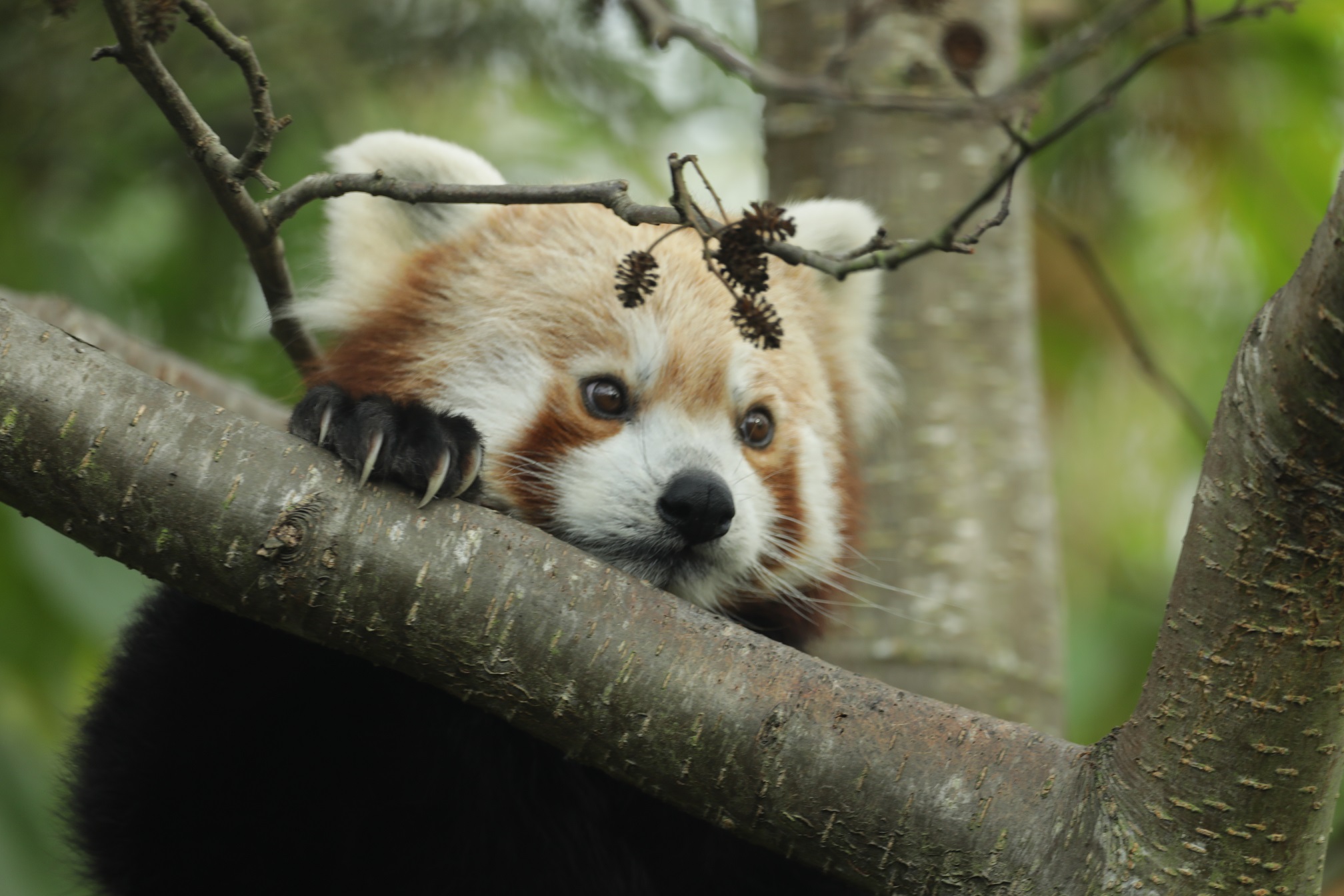Summer 2025: ICAS Project Update
Posted 18 Aug 2025

Our charity has worked with Dr Arnaud Desbiez and his team at the Wildlife Conservation Institute (ICAS) in Brazil for over a decade to safeguard threatened giant anteaters, giant armadillos and their rapidly disappearing habitat. This team has made incredible strides in making habitats and roads safer for giant anteaters and discovered nearly everything that is currently known about giant armadillos.
Arnaud recently updated us on what’s been happening with ICAS’ giant anteater and giant armadillo conservation work in the past few months.
Pantanal
After a very dry rainy season had us very worried, the dry season started with a lot of rain! This was a surprising turn of events, but also fantastic. I was lucky enough to see the pink ipê trees in full bloom, which was spectacular.
We have held our annual training for the Community Fire Brigade. Over 50 people were trained at three different ranches. In total, 25 ranches are protecting 1,600 km² of the Pantanal from wildfires. Let’s hope this year is not too dry.
We also delivered a talk on the care of domestic dogs and the importance of vaccinating dogs for human and wildlife health.
A committee with ranch owners has been established to discuss the fire brigade and potential improvements. We have submitted a proposal to the state government for more funding to create an operational plan for controlled burning.
This is a highly valuable community initiative that is helping to protect essential giant armadillo habitat in the Pantanal.
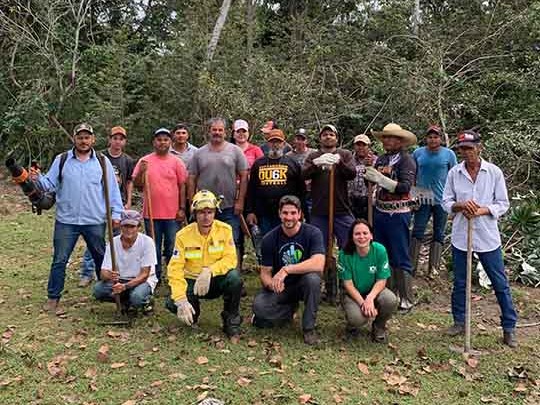
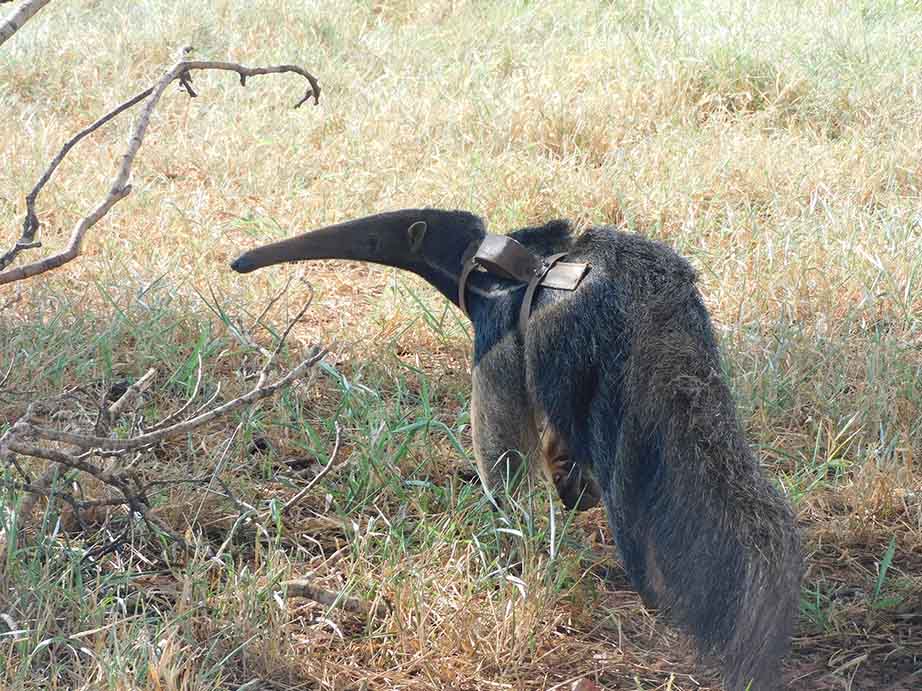
Giant anteaters
In my last update I mentioned Kate, a female giant anteater we monitor. She had established herself near a major highway. This was worrying - we’ve seen many of our monitored giant anteaters killed on roads.
Worst of all, Kate’s favourite sleeping spot was in some bushes right at the edge of the highway. We knew she would not last long so we intervened, recapturing Kate and returning her to the area where she was born . To our dismay, she soon returned to the highway, some 40 km away.
We tried again to the same result. By this point, we were shocked and horrified. Does the permeability of the landscape draw her there? Why is she returning to the exact same spot?
We therefore translocated her to a new area and are hoping she will stay there. So far she has remained in the new location. Stay tuned for more news about Kate.
New giant anteater research paper
We have just published a new study revealing the surprising behaviours related to the giant anteater’s large tail.
The research, published in the Journal of Ethology, is the result of more than two years of observations of monitored anteaters in the Cerrado. We documented social, physiological and mechanical functions of the tail. Among our new findings are tail movements used to signal that it is not the right moment for the pup to climb onto the mother’s back, as well as new uses of the tail in thermoregulation, acting as both a fan and a parasol.
We also describe how the tail changes throughout growth, further highlighting the pup’s dependency on its mother.
Please check out the article and all the videos and images on YouTube.
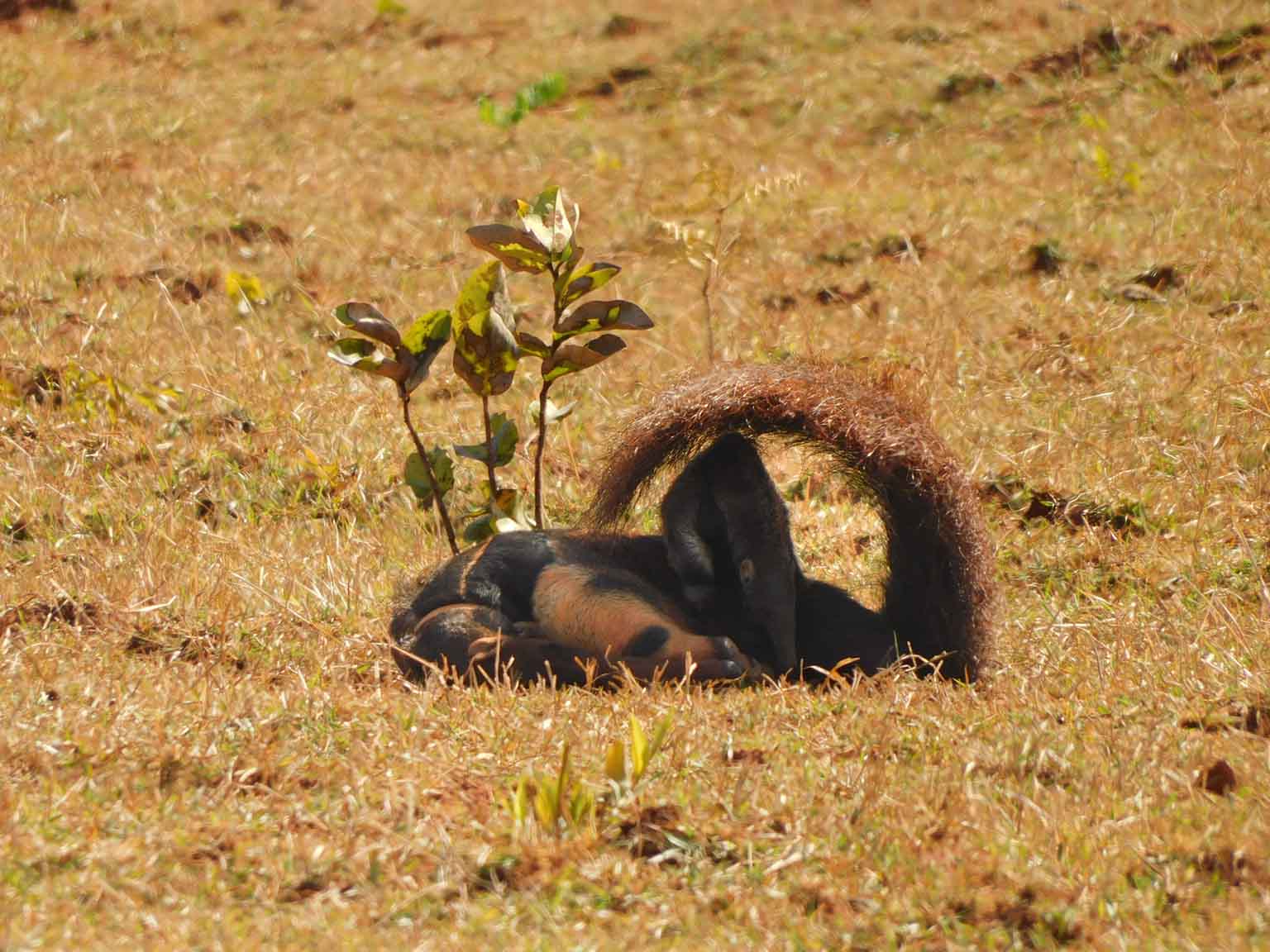

Education outreach
We have developed a special exhibition for our local shopping malls which introduce the giant armadillo and giant anteater and raise awareness about their protection.
For 10 days, our team and 20 biology students from the University of Campo Grande presented this interactive exhibition and answered hundreds of visitors’ questions. The event received coverage from television and local press. The exhibition has subsequently been held in another mall.
Our education team also organised a seminar to bring together all environmental education professionals from Mato Grosso do Sul. 50 leading education figures in the state, including professors, educators, environmental NGOs and local organisations brainstormed ideas and approaches. New collaborations and initiatives were created and shared. With resources scarcer than ever, it’s essential that we unite and work together.
The campaign The Animals of the Atlantic Forest in the Rio Doce Park, in Minas Gerais, was also carried out by our team. In partnership with park authorities, hundreds of children learned about the giant armadillo and its ecosystem engineer role.
New murals
In August we are running events in three Mato Grosso do Sul towns: Brasilândia, Ribas do Rio Pardo and Três Lagoas.
The artist Fernando Berg will paint a mural in each town. Alongside this, we will host an event selling locally produced, giant armadillo-friendly honey and our education team will present an exhibition. We intend these events to raise awareness about giant armadillos, promote armadillo-friendly honey and leave a beautiful legacy in each location.
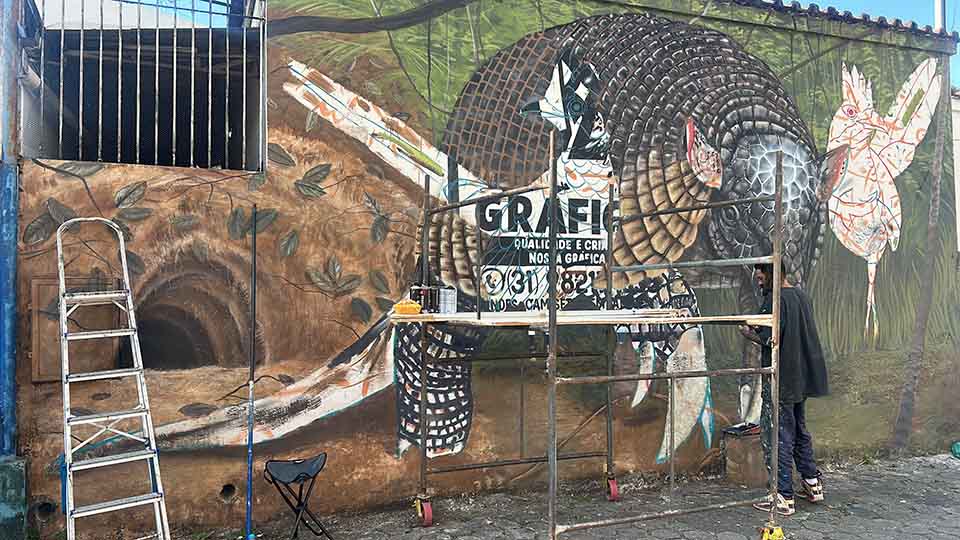

Road safety campaign
Our education team participated in the Yellow May campaign in the Pantanal. The movement was launched in Brazil in 2014. It draws attention to the high rate of deaths and injuries in traffic, including wildlife-vehicle collisions. The campaign aims to put road safety on the agenda, mobilising society through education and prevention programmes.
Our team joined activities in the schools of Aquidauana. Here, we have partnered with local authorities for over a decade to organise educational sessions for over 400 teachers and students (and future drivers!) on road safety.
The Executive Secretary hired for the Observatory: Roads Safe for All has been actively participating in key meetings and helping to unite the six participating NGOs in the Observatory to ensure our action plan is implemented. Most importantly, we are beginning to see a cultural shift in state authorities, who now fully recognise the problem.
News from the Cerrado
Two giant armadillos have been captured in a new study area for this species in the Cerrado, where we have partnered with a eucalyptus plantation. Using camera traps and GPS tags, we hope to understand how giant armadillos use or avoid eucalyptus plantations, and how areas can be set aside to maintain connected populations.
These two new individuals live in a mosaic of native habitats and eucalyptus plantations. They will help us better understand how giant armadillos survive in these modified environments.
In Pombo Park, we also captured a new giant armadillo, bringing the total caught there to three.
We have also started a new study area in the Cerrado for giant anteaters. In the past few months, 13 giant anteaters have been captured and collared. We are now working in four different areas, including the area where we are following a young albino anteater.
Our team travels throughout the state to monitor dispersing animals. We currently have three dispersers, all females. No males have ever dispersed.
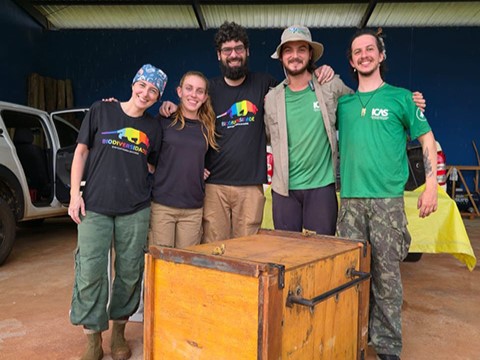
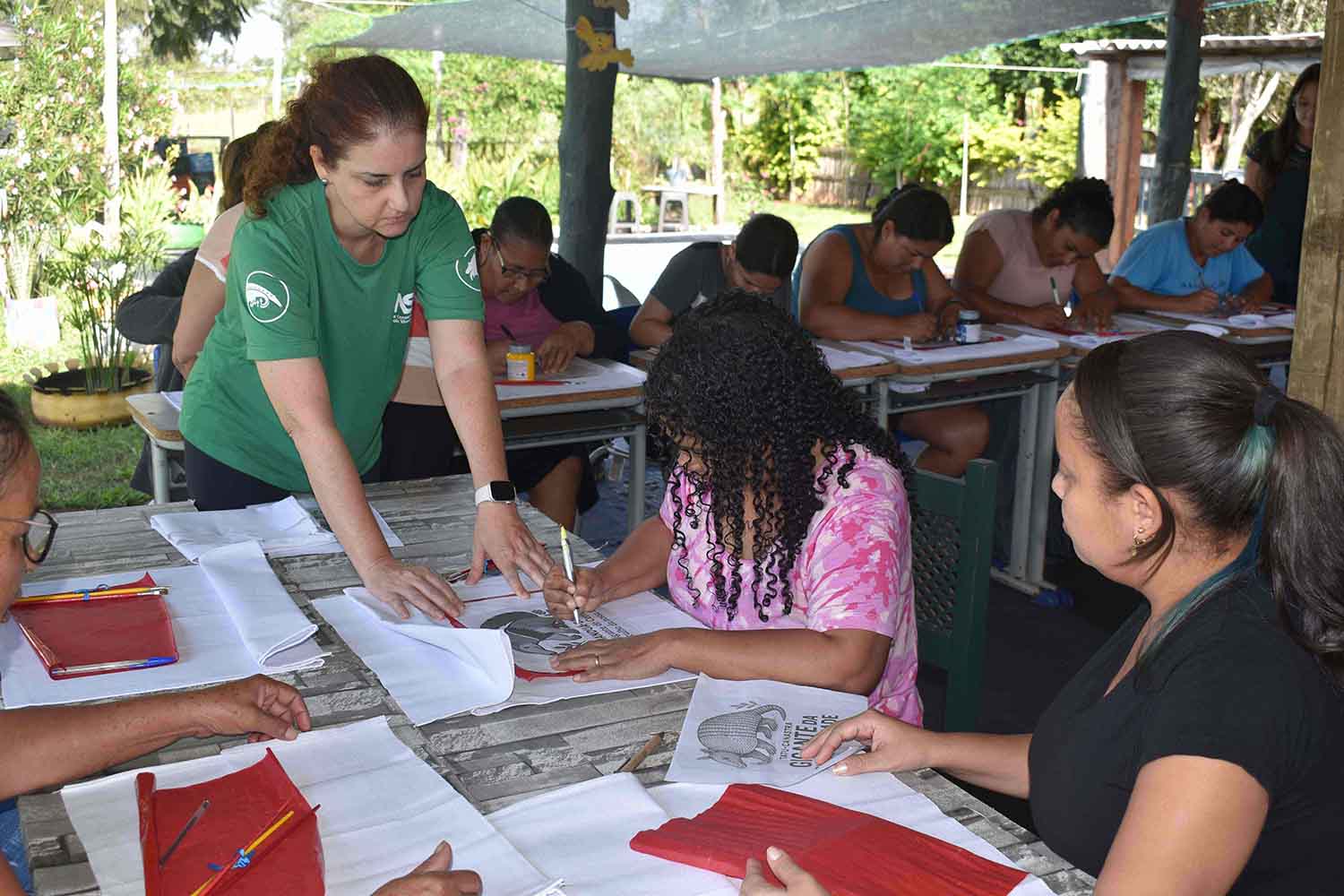
Livelihood project
Our team organised our first livelihood initiative in the Cerrado: a workshop with a group of women in a rural community of landless farmers.
Our coexistence and communication teams spent three days in the community with a teacher. We were training the women in producing crafts inspired by Cerrado fauna and flora.
We discussed empowerment strategies and ways to better market and sell their crafts. Basic tutorials on photography, video creation and using social media were given to help the artisans increase their income from craft sales.
We would like to thank the players of People’s Postcode Lottery for their generous support which has helped this project.

